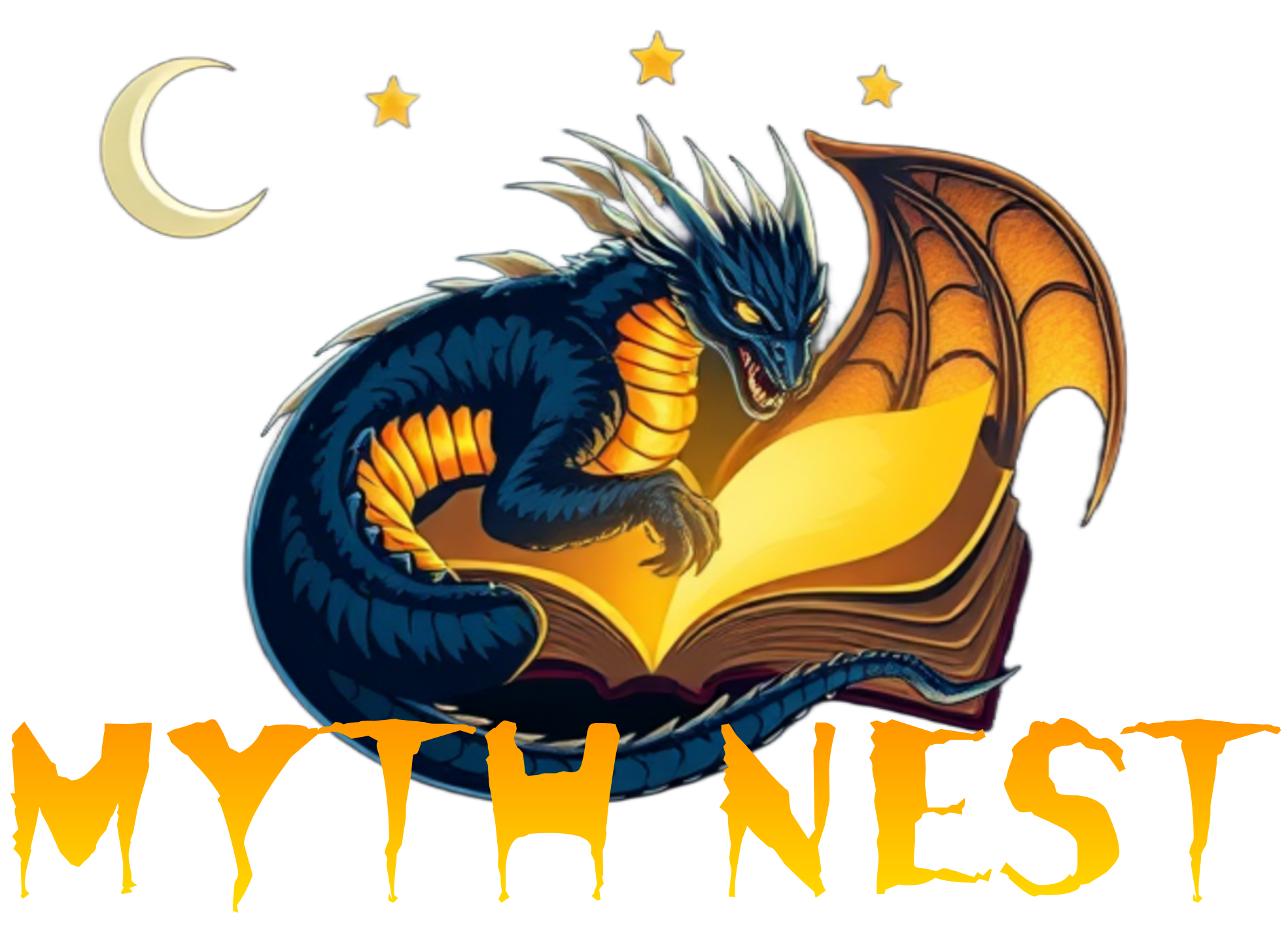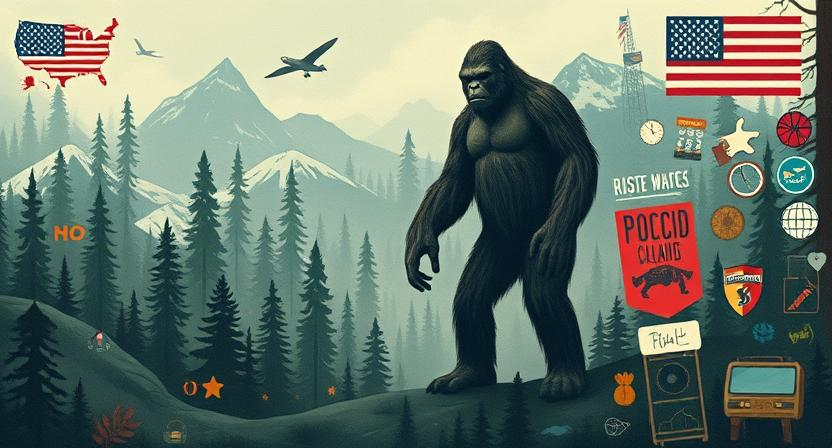Legends and Folklore Surrounding Bigfoot

Legends surrounding Bigfoot have been deeply ingrained in the folklore of various indigenous tribes across North America for centuries. Known by different names such as Sasquatch, Skookum, and Omah, these mythical creatures are often described as towering, hairy beings that dwell in the remote wilderness. Many tribes have oral traditions of encounters with these elusive beings, with beliefs that they possess unique powers and can communicate with the spirit world.
These stories have been passed down through generations, becoming woven into the rich tapestry of Native American mythology. While interpretations and descriptions may vary, the consistent theme of a powerful and mysterious being lurking in the forests remains prevalent. The reverence and fear associated with Bigfoot in these traditions have helped shape the broader perception of this creature in modern times, blending ancient beliefs with contemporary fascination and speculation.
• Legends surrounding Bigfoot have been deeply ingrained in the folklore of various indigenous tribes across North America for centuries.
• Known by different names such as Sasquatch, Skookum, and Omah, these mythical creatures are often described as towering, hairy beings that dwell in the remote wilderness.
• Many tribes have oral traditions of encounters with these elusive beings, with beliefs that they possess unique powers and can communicate with the spirit world.
These stories have been passed down through generations, becoming woven into the rich tapestry of Native American mythology. While interpretations and descriptions may vary, the consistent theme of a powerful and mysterious being lurking in the forests remains prevalent. The reverence and fear associated with Bigfoot in these traditions have helped shape the broader perception of this creature in modern times, blending ancient beliefs with contemporary fascination and speculation.
Historical Sightings of Bigfoot
Reports of large, hairy, bipedal creatures resembling what we now call Bigfoot have been documented throughout history. Tales of encounters with these elusive beings can be found in various cultures and time periods, often described as wild and hairy humanoids lurking in remote wilderness areas. These historical sightings have sparked curiosity and intrigue, leading many to speculate about the existence of such creatures.
One particularly famous historical account is the tale of the “Wild Man” of the Caucasus region, where local legends speak of a hairy, ape-like creature roaming the mountains. Similar stories can be found in Native American folklore, with tribes recounting encounters with beings known as Sasquatch or Skookum, believed to possess incredible strength and supernatural powers. These historical sightings have left a lasting imprint on the collective imagination, fueling the ongoing fascination with the mystery of Bigfoot.
• Reports of large, hairy, bipedal creatures resembling Bigfoot have been documented throughout history
• Encounters with these elusive beings can be found in various cultures and time periods
• Historical sightings describe wild and hairy humanoids lurking in remote wilderness areas
• The tale of the “Wild Man” of the Caucasus region is a famous historical account
• Native American folklore includes stories of encounters with Sasquatch or Skookum beings
• These historical sightings have fueled curiosity and speculation about the existence of such creatures
Physical Descriptions of Bigfoot
Bigfoot, also known as Sasquatch, is often described as a towering humanoid creature covered in dark, shaggy fur. Witnesses commonly report its large, muscular build and powerful stature, standing between 7 to 10 feet tall. The creature’s footprints are notably immense, with an estimated length of 15 to 24 inches, resembling that of a massive barefoot.
Many accounts depict Bigfoot having a conical head, a prominent brow ridge, and a pronounced jawline. Its eyes are said to be deep-set and dark, giving off an aura of mystery and intimidation. Witnesses frequently mention the musky odor that accompanies Bigfoot sightings, contributing to the creature’s enigmatic presence in the wilderness.
• Bigfoot is often described as a towering humanoid creature covered in dark, shaggy fur
• Witnesses commonly report its large, muscular build and powerful stature standing between 7 to 10 feet tall
• The creature’s footprints are notably immense with an estimated length of 15 to 24 inches resembling that of a massive barefoot
• Many accounts depict Bigfoot having a conical head, prominent brow ridge, and pronounced jawline
• Its eyes are said to be deep-set and dark, giving off an aura of mystery and intimidation
• Witnesses frequently mention the musky odor that accompanies Bigfoot sightings
Possible Origins of the Bigfoot Legend
The origins of the Bigfoot legend are shrouded in mystery and speculation. One theory suggests that tales of the creature stem from the native tribes of North America, who have long-standing beliefs in powerful and elusive forest spirits that resemble Bigfoot in appearance. These cultural stories were passed down through generations, contributing to the lore of the enigmatic creature.
Another possible origin of the Bigfoot legend could be attributed to misidentifications or exaggerated stories of encounters with known wildlife such as bears, deer, or other large animals. In the vast and rugged wilderness of North America, it is not uncommon for individuals to mistake a normal animal for something more extraordinary, especially in low-light or high-stress situations. These misinterpretations may have fueled the myth of Bigfoot throughout history.
• Some researchers believe that the Bigfoot legend may have originated from hoaxes or pranks carried out by individuals seeking attention or notoriety.
• The idea of a large, ape-like creature lurking in the forests captured the imagination of many and led to fabricated stories and fake evidence being presented as proof of Bigfoot’s existence.
• Additionally, pop culture and media portrayals of mysterious creatures and cryptids have also played a role in perpetuating the myth of Bigfoot. Movies, television shows, and books featuring creatures like Sasquatch have further blurred the lines between fact and fiction.
• It is possible that a combination of these factors – cultural beliefs, misidentifications, hoaxes, and media influence – has contributed to the enduring popularity of the Bigfoot legend. Despite efforts to debunk sightings and find concrete evidence, the mystery surrounding this elusive creature continues to captivate people around the world.
Cultural Significance of Bigfoot in American Society

Bigfoot holds a unique place in American society, with its elusive nature fueling a sense of mystery and wonder for many. The creature has become deeply rooted in popular culture, inspiring countless books, movies, and TV shows that continue to captivate audiences young and old. From documentaries to fictional tales, Bigfoot remains a captivating figure that sparks imagination and curiosity.
Moreover, Bigfoot has also evolved into a symbol of wilderness and the unknown, embodying the vast expanses of nature that still hold secrets waiting to be unveiled. Many Americans view Bigfoot as a reminder of the uncharted territories and untamed beauty of the wilderness, with the creature symbolizing the possibility of discovery amidst the vast landscapes of the country. As a cultural icon, Bigfoot serves as a connection to the wild and a reminder of the mysteries that still exist in the natural world.
• Bigfoot’s elusive nature fuels a sense of mystery and wonder
• Inspires countless books, movies, and TV shows that captivate audiences
• Symbolizes wilderness and the unknown, embodying uncharted territories
• Represents the possibility of discovery amidst vast landscapes
• Serves as a connection to the wild and a reminder of natural world mysteries
Bigfoot Hoaxes and Pranks
The topic of Bigfoot hoaxes and pranks has generated significant interest and controversy within the realm of cryptozoology. Over the years, there have been numerous instances where individuals have fabricated stories or staged elaborate hoaxes in an attempt to perpetuate the myth of Bigfoot. These hoaxers often create false footprints, blurry photographs, and even constructed Bigfoot costumes to fool the public and garner attention.
Despite the efforts of genuine researchers and enthusiasts to separate fact from fiction when it comes to Bigfoot sightings, hoaxes and pranks continue to muddy the waters. From viral videos claiming to capture Bigfoot on film to elaborate schemes designed to dupe the unsuspecting public, these deceptive acts have added an air of skepticism to the search for the elusive creature. It is crucial for individuals interested in Bigfoot research to approach any alleged sightings or evidence with a critical eye in order to discern the truth from deliberate falsehoods.
• One common hoax involves creating fake footprints using wooden cutouts or molds to mimic the large, distinctive tracks attributed to Bigfoot.
• Some individuals have gone as far as using gorilla suits or other elaborate costumes to stage sightings of Bigfoot in remote areas, further perpetuating the myth.
• Hoaxers often rely on blurry photographs or videos that make it difficult to discern details, allowing them to claim they captured evidence of Bigfoot without providing clear proof.
• The rise of social media and easy access to editing tools has made it easier for pranksters to create convincing hoaxes that can quickly go viral and deceive a wide audience.
Scientific Studies on Bigfoot Evidence
In the realm of cryptozoology, Bigfoot remains a subject of fascination and speculation. Scientific studies on Bigfoot evidence often strive to separate fact from folklore, employing various methods to analyze purported sightings, footprints, hairs, and audio recordings. Researchers utilize a combination of fieldwork, DNA analysis, and footprint casting to gather data, occasionally collaborating with experts in primatology and anthropology to assess the legitimacy of Bigfoot encounters.
Despite the lack of definitive proof, some researchers argue that the anecdotal accounts and physical evidence merit further investigation. By adopting a cautious yet open-minded approach, scientists endeavor to unravel the mystery surrounding Bigfoot and shed light on the potential existence of this elusive creature. In the pursuit of scientific validation, the study of Bigfoot evidence continues to captivate both skeptics and believers alike, sparking debates and inspiring new avenues of research.
• Scientific studies on Bigfoot evidence aim to separate fact from folklore
• Researchers use methods such as DNA analysis, footprint casting, and fieldwork
• Collaboration with experts in primatology and anthropology helps assess the legitimacy of encounters
• Despite lack of definitive proof, some argue that anecdotal accounts and physical evidence warrant further investigation
• Scientists approach the study of Bigfoot evidence cautiously yet open-mindedly to unravel the mystery surrounding this elusive creature
Bigfoot in Popular Culture
Bigfoot has become a prominent figure in popular culture, appearing in numerous books, movies, television shows, and even songs. This mysterious creature has captured the imagination of many, drawing both fascination and fear from audiences worldwide. From cheesy B-movies to documentaries exploring the legend of Bigfoot, this cryptid has left its mark on various forms of entertainment.
In recent years, Bigfoot has also made its way into video games and comic books, further solidifying its place in popular culture. With its elusive nature and mythical status, Bigfoot continues to be a subject of intrigue for creators and consumers alike. Whether portrayed as a menacing beast lurking in the woods or a misunderstood creature seeking to avoid human contact, Bigfoot remains a captivating and enduring icon in contemporary culture.
• Bigfoot has inspired numerous books, such as “The Legend of Boggy Creek” and “Sasquatch: The Apes Among Us”
• Movies like “Harry and the Hendersons” and “Willow Creek” have featured Bigfoot as a central character
• Television shows like “Finding Bigfoot” and “Monster Quest” have explored the legend of Bigfoot in depth
• Songs like “Big Foot Mama” by Ray Stevens and “Legend of Bigfoot” by Bob Dylan have referenced the creature in their lyrics
In addition to traditional forms of media, video games like “Big Foot” for the Atari 2600 and comic books like “Savage Sasquanaut” have incorporated Bigfoot into their storylines. This widespread presence across various mediums speaks to the enduring appeal of this cryptid. As technology advances, new ways of depicting and interacting with Bigfoot continue to emerge, keeping this legendary creature relevant in popular culture. Whether depicted as a friend or foe, one thing is certain – Bigfoot’s mysterious nature will continue to captivate audiences for years to come.
Overall, it is clear that Bigfoot’s influence on popular culture shows no signs of slowing down. With its ability to inspire fear, wonder, curiosity, and even humor among people worldwide, this elusive creature remains a beloved figure in entertainment. As long as there are stories left untold about hidden creatures lurking in the wilderness, it seems likely that Bigfoot will always find a place within our collective imagination.
Bigfoot in Native American Mythology

Native American tribes have rich traditions filled with mythical creatures that embody the mysteries of the natural world. Within these traditions, stories of a hairy, humanoid creature known as Bigfoot have been passed down through generations.
In various Native American mythologies, Bigfoot is often depicted as a powerful and elusive being that dwells in the deep forests and mountains, possessing supernatural abilities and serving as a guardian of the wilderness. Many tribes believe that encounters with Bigfoot can bring both fear and protection, with some viewing the creature as a symbol of respect for nature’s secrets and the importance of living in harmony with the land.
• Bigfoot is a common figure in Native American mythologies, often portrayed as a powerful and mysterious being.
• Many tribes believe that encounters with Bigfoot can evoke feelings of fear and protection.
• Some view Bigfoot as a symbol of respect for nature’s secrets and the importance of living in harmony with the land.
Famous Bigfoot Encounters
One of the most famous Bigfoot encounters occurred in 1967 when Roger Patterson and Bob Gimlin captured footage of what is believed to be a female Bigfoot creature walking along Bluff Creek in California. The Patterson-Gimlin film remains one of the most iconic pieces of evidence in the Bigfoot field, sparking debates and discussions among believers and skeptics alike.
Another well-known encounter took place in 1924 when a group of miners in Ape Canyon, Washington, claimed to have been attacked by a group of large, hairy creatures resembling Bigfoot. The miners reported that the creatures hurled rocks at their cabin and caused chaos before retreating into the wilderness. This event added to the rich tapestry of Bigfoot lore and fueled further interest in the elusive creature.
• The Patterson-Gimlin film from 1967 is one of the most iconic pieces of Bigfoot evidence
• Sparked debates and discussions among believers and skeptics alike
• A group of miners in Ape Canyon, Washington, claimed to have been attacked by Bigfoot-like creatures in 1924
• The creatures reportedly hurled rocks at their cabin and caused chaos before retreating into the wilderness
• This event added to the rich tapestry of Bigfoot lore
Bigfoot Hotspots Around the United States
The Pacific Northwest, specifically the dense forests of Washington and Oregon, is a well-known hotspot for Bigfoot sightings. The rugged terrain, abundant wildlife, and vast stretches of uninhabited land make this region an ideal habitat for such elusive creatures. The coastal areas and mountainous regions have generated numerous reports of encounters with the cryptid over the years.
Moving across the country to the Appalachian Mountains in the eastern United States, reports of Bigfoot sightings also abound. The remote wilderness and rugged terrain of states such as West Virginia, Kentucky, and Tennessee provide ample cover for a creature seeking to remain hidden from human eyes. With a long history of folklore and legends surrounding mysterious creatures, the Appalachian region continues to be a magnet for those hoping to catch a glimpse of the legendary Bigfoot.
• The Pacific Northwest, specifically Washington and Oregon, is a hotspot for Bigfoot sightings due to dense forests and rugged terrain.
• Coastal areas and mountainous regions in the Pacific Northwest have generated numerous reports of encounters with Bigfoot over the years.
• Moving to the eastern United States, the Appalachian Mountains in states like West Virginia, Kentucky, and Tennessee also have reports of Bigfoot sightings.
• The remote wilderness and rugged terrain of the Appalachian region provide ample cover for elusive creatures like Bigfoot.
• With a long history of folklore surrounding mysterious creatures, the Appalachian region continues to attract those hoping to see Bigfoot.
Bigfoot Expeditions and Research Groups
Several organizations and individuals around the world dedicate their time and resources to conducting expeditions and research on the elusive Bigfoot. These groups often consist of passionate researchers, outdoor enthusiasts, and wildlife experts who are determined to uncover the truth behind the mysterious creature. Their expeditions typically involve exploring remote wilderness areas, setting up trail cameras, and conducting field investigations in known Bigfoot hotspots.
These research groups utilize a variety of methods to gather evidence of Bigfoot’s existence, including collecting hair samples, footprint casts, and conducting night vigils to capture any possible audio or visual recordings of the creature. Some groups even employ cutting-edge technology such as drones and thermal imaging cameras to aid in their search for Bigfoot. Despite facing skepticism and ridicule from skeptics, these dedicated researchers remain committed to their mission of unraveling the secrets of the legendary creature known as Bigfoot.
• Bigfoot research groups consist of passionate individuals dedicated to uncovering the truth behind the mysterious creature
• Expeditions involve exploring remote wilderness areas and setting up trail cameras in known Bigfoot hotspots
• Methods used by these groups include collecting hair samples, footprint casts, and conducting night vigils for audio or visual recordings
• Some groups utilize advanced technology such as drones and thermal imaging cameras to aid in their search for Bigfoot
• Despite facing skepticism, researchers remain committed to their mission of unraveling the secrets of Bigfoot
Bigfoot Sightings in Other Countries

Bigfoot sightings are not confined to the borders of the United States, as similar creatures have been reported in various other countries around the world. In Canada, the mythical creature known as Sasquatch is believed to roam the vast wilderness, with numerous sightings and encounters reported throughout the country. Like its American counterpart, Sasquatch is described as a large, hairy bipedal creature, leaving behind footprints and eliciting both fear and curiosity among locals and researchers.
Across the Pacific Ocean in Australia, stories of the Yowie have been shared among indigenous populations for centuries. Described as a hairy hominid that dwells in the rugged terrain of the Australian outback, the Yowie is said to possess immense strength and an elusive nature, similar to the Bigfoot legends in North America. Reports of Yowie encounters continue to surface, adding to the global tapestry of cryptids and mysterious beings that capture the imagination of people worldwide.
• Sasquatch sightings have been reported in Canada, similar to Bigfoot encounters in the US
• Yowie stories have been shared among indigenous populations in Australia for centuries
• The Yowie is described as a hairy hominid with immense strength and an elusive nature
Bigfoot Skeptics and Debunkers
Bigfoot skeptics and debunkers often point to the lack of concrete evidence supporting the existence of the legendary creature. They argue that the supposed Bigfoot sightings can be attributed to misidentifications of known animals, hoaxes, or simply a trick of the eye. Skeptics highlight the absence of verifiable physical remains or DNA samples as compelling reasons to question the reality of Bigfoot.
Debunkers also question the reliability of eyewitness testimonies, citing factors such as poor visibility, distance, and psychological predispositions that may influence what individuals believe they have seen. They emphasize the need for rigorous scientific scrutiny and reproducible evidence before accepting the existence of such a significant cryptid as Bigfoot.
• Bigfoot skeptics and debunkers often point to the lack of concrete evidence supporting the existence of the legendary creature.
• They argue that supposed Bigfoot sightings can be attributed to misidentifications, hoaxes, or optical illusions.
• Skeptics highlight the absence of verifiable physical remains or DNA samples as reasons to question Bigfoot’s reality.
• Debunkers question the reliability of eyewitness testimonies due to factors like poor visibility and psychological biases.
• Both skeptics and debunkers emphasize the need for rigorous scientific scrutiny before accepting Bigfoot’s existence.
Legal Issues Related to Bigfoot Protection
Legal issues surrounding Bigfoot protection have become a debated topic in recent years. As the legend of Bigfoot continues to capture public fascination, concerns have arisen regarding potential threats to this elusive creature’s habitat and well-being. Some advocates argue for legal protections to safeguard Bigfoot and its habitat from human interference and exploitation.
On the other hand, skeptics question the need for such protections, citing the lack of conclusive evidence of Bigfoot’s existence. They argue that allocating resources and legal measures towards protecting a creature that may be purely mythical could be a misallocation of valuable resources that could be better used elsewhere. Despite differing opinions, the discussion on legal protections for Bigfoot sheds light on broader conversations about conservation, folklore, and the intersection of myth and reality in the modern world.
• Proponents argue that legal protections are necessary to safeguard Bigfoot and its habitat
• Skeptics question the need for protections due to lack of conclusive evidence of Bigfoot’s existence
• Debate highlights broader conversations about conservation, folklore, and myth vs. reality in modern society
Bigfoot as a Symbol of Wilderness Conservation
Bigfoot, with its elusive nature and mysterious presence in the wilderness, has become a symbol of conservation efforts across the United States. Many environmentalists and nature enthusiasts see Bigfoot as a reminder of the importance of preserving our natural habitats and respecting the delicate balance of ecosystems. The idea of Bigfoot roaming freely in the vast forests and mountains serves as a poignant representation of the need to protect the wild spaces that these creatures allegedly call home.
By embracing Bigfoot as a symbol of wilderness conservation, advocates hope to raise awareness about the importance of safeguarding endangered species and habitats. The legend of Bigfoot prompts people to consider the impact of human activities on the environment and encourages them to take action to preserve these valuable areas for future generations. Through the lens of Bigfoot mythology, individuals are encouraged to view the wilderness not just as a backdrop for adventure, but as a vital ecosystem that requires protection and stewardship.
• Bigfoot symbolizes the importance of preserving natural habitats
• Advocates use Bigfoot to raise awareness about endangered species and ecosystems
• The legend of Bigfoot prompts people to consider the impact of human activities on the environment
• Encourages individuals to view wilderness as a vital ecosystem that requires protection
Bigfoot Merchandise and Tourism

Bigfoot has become a popular figure not only in folklore and pop culture, but also in the world of merchandise and tourism. Enthusiasts and believers alike can find a plethora of Bigfoot-themed products to satisfy their curiosity and admiration for this elusive creature. From t-shirts and hats to mugs and keychains, there is no shortage of souvenirs celebrating Bigfoot’s mysterious presence in the American wilderness.
In regions known for Bigfoot sightings and encounters, such as the Pacific Northwest and the Appalachian Mountains, tourism related to the legendary creature has also thrived. Local businesses offer Bigfoot-themed tours, expeditions, and activities for visitors eager to explore the wilderness while searching for signs of the elusive creature. Whether visitors are skeptics, believers, or simply curious, the allure of Bigfoot merchandise and tourism continues to captivate audiences of all ages.
• Bigfoot merchandise has become a popular industry, with a wide range of products available for enthusiasts
• T-shirts, hats, mugs, and keychains are just some of the many souvenirs celebrating the mysterious creature
• Regions known for Bigfoot sightings like the Pacific Northwest and Appalachian Mountains have thriving tourism industries related to the legendary creature
• Local businesses offer tours, expeditions, and activities for visitors interested in exploring while searching for signs of Bigfoot
• The allure of Bigfoot merchandise and tourism attracts audiences of all ages, whether they are skeptics, believers or simply curious.
Bigfoot as a Mascot for Sports Teams and Brands
Many sports teams and brands have embraced Bigfoot as a mascot, leveraging its mysterious and elusive nature to create a sense of intrigue and excitement among their fans and consumers. By associating themselves with this legendary creature, these organizations are able to tap into the sense of adventure and exploration that Bigfoot symbolizes, appealing to a wide audience that is captivated by the unknown.
With its powerful and rugged image, Bigfoot evokes qualities of strength, resilience, and determination, making it a fitting symbol for sports teams looking to convey a sense of competitiveness and fearlessness. The use of Bigfoot as a mascot can also create a sense of unity and pride among fans, who rally behind this iconic figure as a representation of their team’s spirit and identity. In the world of branding, Bigfoot serves as a unique and attention-grabbing symbol that sets organizations apart and leaves a lasting impression on consumers.
• Bigfoot’s mysterious and elusive nature creates intrigue and excitement among fans and consumers
• The legendary creature symbolizes adventure and exploration, appealing to a wide audience
• Bigfoot’s image evokes qualities of strength, resilience, and determination, making it ideal for sports teams
• Fans rally behind Bigfoot as a representation of their team’s spirit and identity
• In branding, Bigfoot serves as a unique symbol that sets organizations apart from competitors
Bigfoot Art and Literature
Bigfoot has long been a subject of fascination for artists and writers, inspiring a wide array of artistic interpretations and literary works. From paintings and sculptures to graphic novels and poems, Bigfoot has left a significant mark on the creative world. Artists often depict Bigfoot in various settings, ranging from dense forests to snowy mountain peaks, capturing the mysterious and elusive nature of this legendary creature.
Literature featuring Bigfoot ranges from fictional stories that explore the creature’s origins and behavior to non-fiction accounts of alleged encounters with the cryptid. Authors have weaved tales of adventure, terror, and intrigue around Bigfoot, engaging readers with the allure of the unknown and the supernatural. Through art and literature, Bigfoot continues to captivate audiences and spark curiosity about the existence of such a mythical being.
• Bigfoot has inspired a wide array of artistic interpretations and literary works
• Artists depict Bigfoot in various settings, capturing the mysterious nature of the creature
• Literature featuring Bigfoot ranges from fictional stories to non-fiction accounts
• Authors weave tales of adventure, terror, and intrigue around Bigfoot
• Through art and literature, Bigfoot continues to captivate audiences and spark curiosity about its existence
Bigfoot Theories and Speculations
One prevalent theory surrounding Bigfoot is the idea that these elusive creatures are a species of undiscovered primate, possibly related to extinct hominid species. Proponents of this theory point to alleged similarities in behavior and physical traits to known primates, suggesting that Bigfoot could be a surviving remnant of a prehistoric lineage that has managed to evade detection. This theory also raises questions about the remote wilderness areas where Bigfoot sightings predominantly occur, with some researchers postulating that these regions provide the perfect habitat for such a reclusive creature to thrive.
Another speculative theory regarding Bigfoot posits that these entities could be interdimensional beings, capable of traversing between our physical plane and other dimensions or realities. Proponents of this idea argue that the apparent ability of Bigfoot to appear and disappear without a trace, as well as the often elusive and mysterious nature of sightings, could be attributed to their supposed interdimensional nature. This theory delves into more esoteric realms, suggesting that Bigfoot may not adhere to the conventional laws of nature as we understand them, leading to a wide range of interpretations and debates within the realm of Bigfoot research and speculation.
• One prevalent theory surrounding Bigfoot is the idea that these elusive creatures are a species of undiscovered primate, possibly related to extinct hominid species.
• Proponents of this theory point to alleged similarities in behavior and physical traits to known primates, suggesting that Bigfoot could be a surviving remnant of a prehistoric lineage that has managed to evade detection.
• This theory also raises questions about the remote wilderness areas where Bigfoot sightings predominantly occur, with some researchers postulating that these regions provide the perfect habitat for such a reclusive creature to thrive.
• Another speculative theory regarding Bigfoot posits that these entities could be interdimensional beings, capable of traversing between our physical plane and other dimensions or realities.
• Proponents of this idea argue that the apparent ability of Bigfoot to appear and disappear without a trace, as well as the often elusive and mysterious nature of sightings, could be attributed to their supposed interdimensional nature.
• This theory delves into more esoteric realms, suggesting that Bigfoot may not adhere to the conventional laws of nature as we understand them, leading to a wide range of interpretations and debates within the realm of Bigfoot research and speculation.




